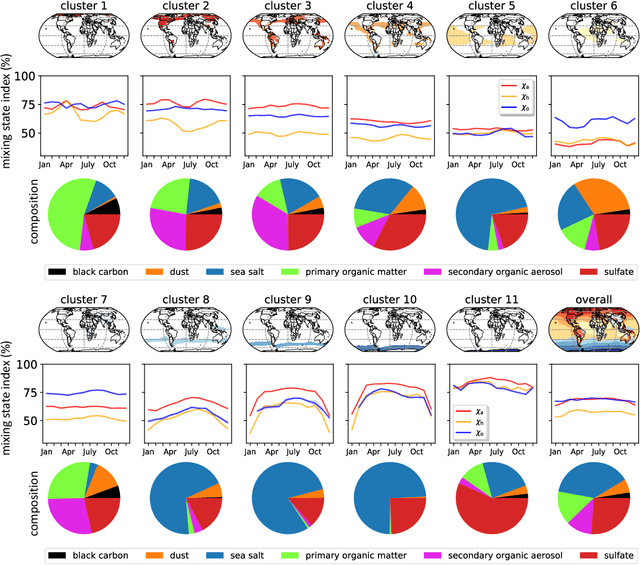Nicole Riemer
Unsupervised Regionalization of Particle-resolved Aerosol Mixing State Indices on the Global Scale
Dec 06, 2020
Abstract:The aerosol mixing state significantly affects the climate and health impacts of atmospheric aerosol particles. Simplified aerosol mixing state assumptions, common in Earth System models, can introduce errors in the prediction of these aerosol impacts. The aerosol mixing state index, a metric to quantify aerosol mixing state, is a convenient measure for quantifying these errors. Global estimates of aerosol mixing state indices have recently become available via supervised learning models, but require regionalization to ease spatiotemporal analysis. Here we developed a simple but effective unsupervised learning approach to regionalize predictions of global aerosol mixing state indices. We used the monthly average of aerosol mixing state indices global distribution as the input data. Grid cells were then clustered into regions by the k-means algorithm without explicit spatial information as input. This approach resulted in eleven regions over the globe with specific spatial aggregation patterns. Each region exhibited a unique distribution of mixing state indices and aerosol compositions, showing the effectiveness of the unsupervised regionalization approach. This study defines "aerosol mixing state zones" that could be useful for atmospheric science research.
 Add to Chrome
Add to Chrome Add to Firefox
Add to Firefox Add to Edge
Add to Edge